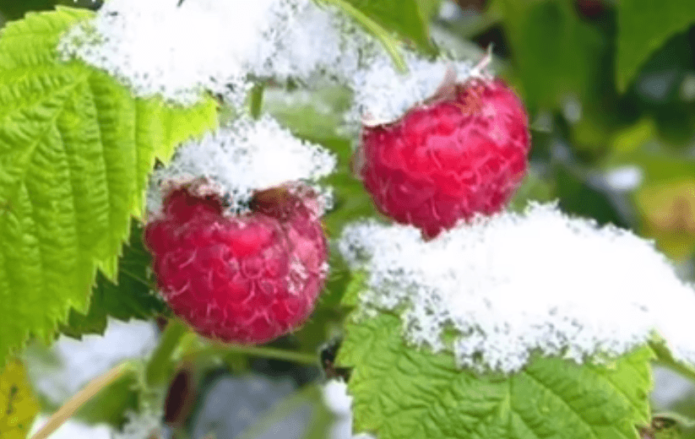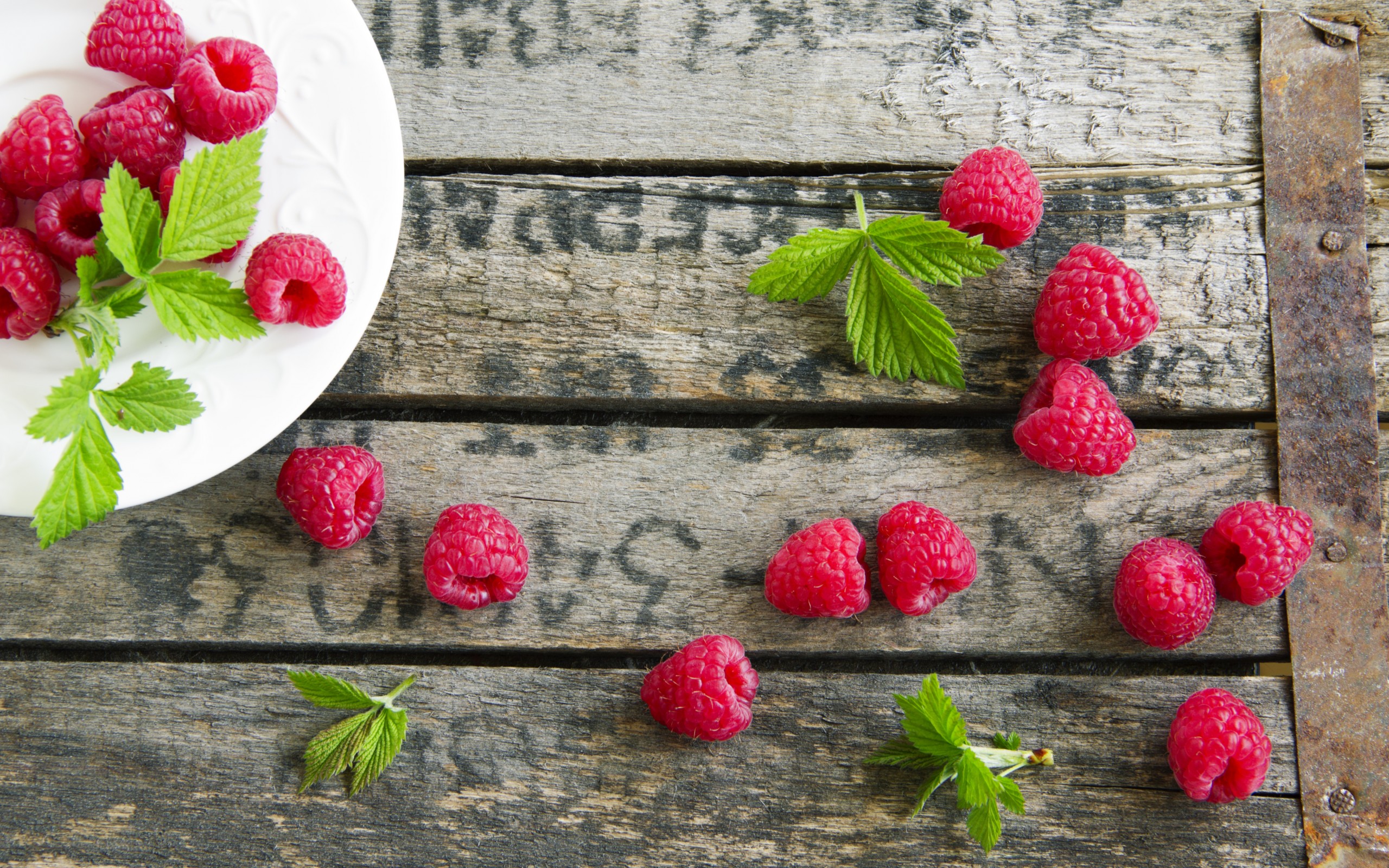Repaired raspberries are a crop that often causes controversy between gardeners in the southern regions and the rest of Russia. The bone of contention is the pruning method. In warm climates, remontant varieties are grown for two crops and pruned like regular raspberries. In the middle lane, Siberia, and the northern regions, the raspberries are completely mown in the fall in order to get one late, but bountiful harvest.
Why remontant raspberries are cut differently in different regions
Repaired varieties differ from the usual ones in that they are capable of producing two crops per season: the first - on lignified stems of the last year, like ordinary raspberries, the second - on young green shoots of the current year. Hence the pruning feature. The culture can be cultivated like ordinary varieties, but get two harvests per season, as well as using one-year technology. In the latter case, all last year's shoots are removed and they wait for one harvest from the young, which in one season manage to grow from scratch, lay flower buds, bloom and form ovaries. Therefore, the berries ripen in late summer - autumn.
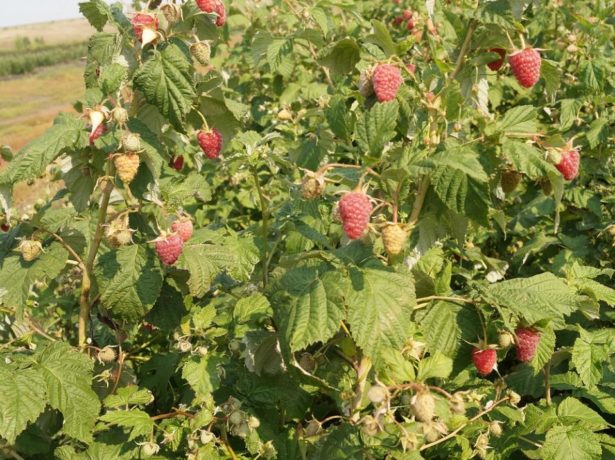
With one-year cultivation, there are no woody stalks of last year in the raspberry field, the harvest is given by young green shoots of this year
In most of Russia, except for the southern regions, because of the short summer, two crops do not have time to ripen, the second falls under frost. And the first, summer, harvest is often poor, since the bush is simultaneously forced to grow berries on old shoots and form a harvest on new ones. It is logical to assume that remontant varieties were created for areas with long summers. In a mild climate with a large number of warm and sunny days, remontant raspberries fully justify their purpose - they bloom and bear fruit well twice a season.
However, enterprising gardeners in the middle lane and northern regions have experimented and found benefits in growing such varieties. After all, you can get rid of old shoots, thereby preserving the strength of the bush and accelerating the growth of new ones. As a result of the refusal from the first harvest, the second ripens in August (with a two-year cultivation - in September-October). The berries grow larger, there are more of them when compared with the harvest on old stems. In addition, raspberries at the end of the season are a curiosity and scarcity, which is very profitable for selling in the market.
Video: features of growing and pruning remontant raspberries, depending on the region
On individual sites in the northern regions, remontant varieties also took root, but did not become the main ones. Practical gardeners at the beginning of summer harvest from ordinary raspberries, and at the end of the season - from remontant, grown according to an annual technology. Thus, this healthy berry replenishes the diet all summer.
Double pruning and the formation of shoots according to Sobolev on remontant raspberries are not done, even in the south. These varieties already have a long growing season, and additional pinching and trimming in spring and summer will further inhibit the development of bushes and postpone the ripening of the crop.
Pruning remontant raspberries for two harvests
The pruning scheme for two harvests is no different from the classic one for raspberries:
- In the summer, immediately after the first harvest, cut all the old (lignified) stems close to the ground. Only young, green ones should remain in the bushes.
- In the fall, after picking the berries from young shoots, cut off their upper fruiting part. Bend to the ground for the winter.
- In the spring, these shortened shoots will begin the growing season, and in the summer you will harvest their first crop from them. Young offspring will grow out of the earth and by autumn they will grow a second one. The circle closes on this: in the summer, remove last year's stems again and leave new ones, of the current year, that will remain to winter.
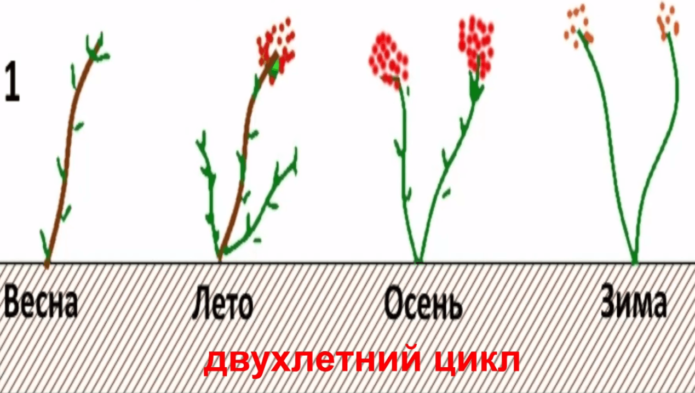
Two-year cultivation: last year's lignified shoots begin growing in the spring; in summer they bear fruit, while young shoots grow; in the fall, only young shoots are left, which give a second harvest, they also go into winter
The technology is suitable for the southern regions: Kuban, Zaporozhye, Rostov Region, Stavropol Territory, etc. You can also try to get two harvests during a warm period in the middle lane and even in the Leningrad Region with risky farming, if you follow the following rules:
- Plant early remontant raspberries. Place them in the sunniest place.
- At the beginning of spring, sprinkle the snow in the raspberry with ash: it will melt faster, the earth will warm up, the growing season will begin earlier. There is a minus - raspberries, blooming ahead of time, may suffer from even strong return frosts. We'll have to cover the bushes with agrofibre.
- When the first harvest ripens, do not let ripe berries hang on the branches for a long time, pick them every 1–2 days. This will stimulate the raspberries to plant the next crop faster.
- Provide good care throughout the season: watering, fertilizing, mulch.
- In autumn, again cover the shoots with ovaries with agrofibre from frost.
Video: how to shorten shoots with a two-year cultivation
Pruning remontant raspberries for one crop
Such pruning can be done in all regions, the crop will be one, but more abundant and earlier compared to a two-year cultivation. The technology is especially relevant for residents of the north, middle zone, the Far East and Siberia, that is, in climatic zones where the second harvest of remontant raspberries does not have time to ripen. The method is extremely simple: every autumn, absolutely all shoots are cut at ground level, without even leaving stumps. You can postpone the event until spring, then in winter the stems will contribute to snow retention, the roots will winter better.
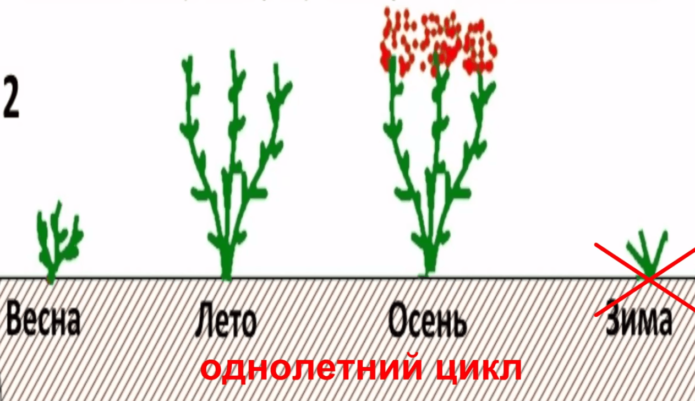
Growing according to one-year technology: young shoots grow from the ground in spring (there are no last year), in summer they vegetate, in autumn they harvest, in winter they are not left
The advantages of a one-year cycle:
- No need to bend and tie up raspberries for the winter.
- In spring and summer, there are no old shoots, the bush does not waste energy on their vegetation and the first harvest.
- Autumn or early spring cutting and burning of the entire aerial part is an effective fight against fungi and parasites that winter on old shoots. Your raspberries will not hurt or suffer from pests.
Video: mowing all shoots of remontant raspberries
For any method of growing remontant raspberries, make formative pruning annually. Each bush should contain a maximum of 10-12 shoots. Leave the strongest and most developed stems. Cut thin, curved, lagging far behind the ground. With a two-year cultivation, such thinning is done in the fall or early spring, with a one-year one - in June, when the young offspring have grown well and among them you can choose the best.
The method of pruning remontant raspberries depends on your choice: grow bushes for two or one harvest. In the southern regions, of course, it is worth using the full potential of this culture, which means, cut it in the classical way, leaving annual shoots to winter.In the rest of Russia, remontant varieties are more profitable to grow as an addition to the usual ones in order to extend the raspberry harvesting season. Therefore, mow all the shoots every fall.
